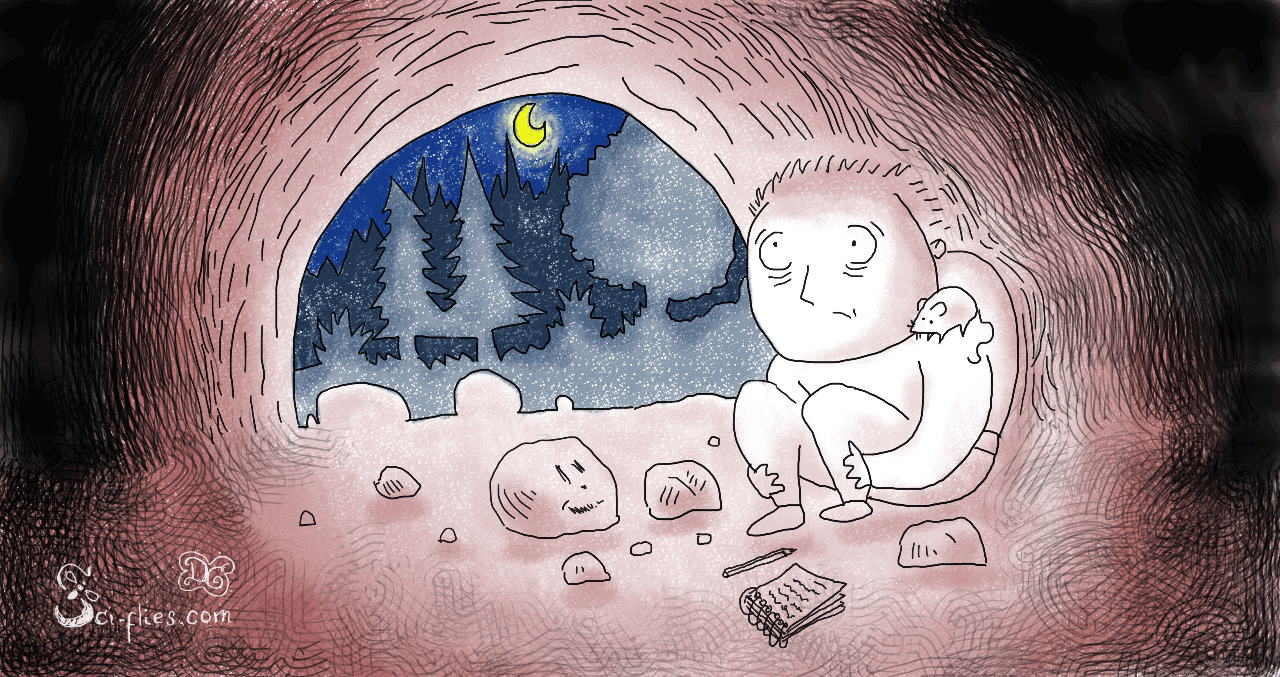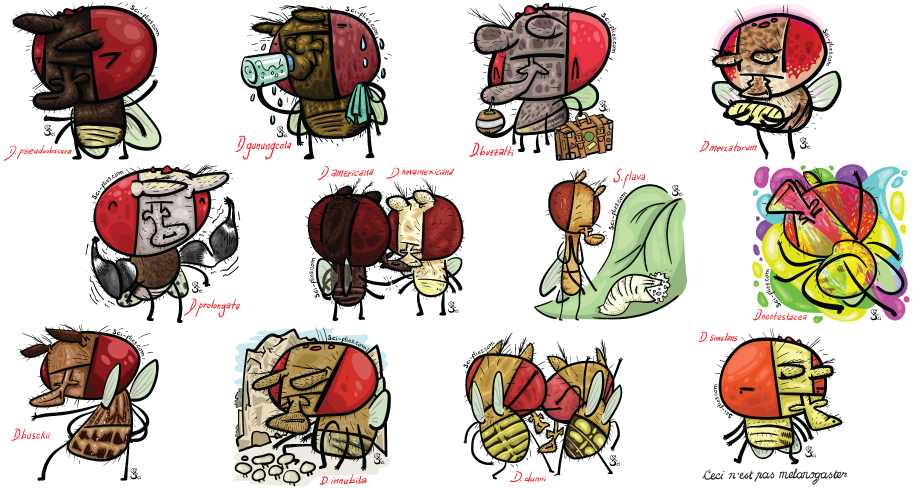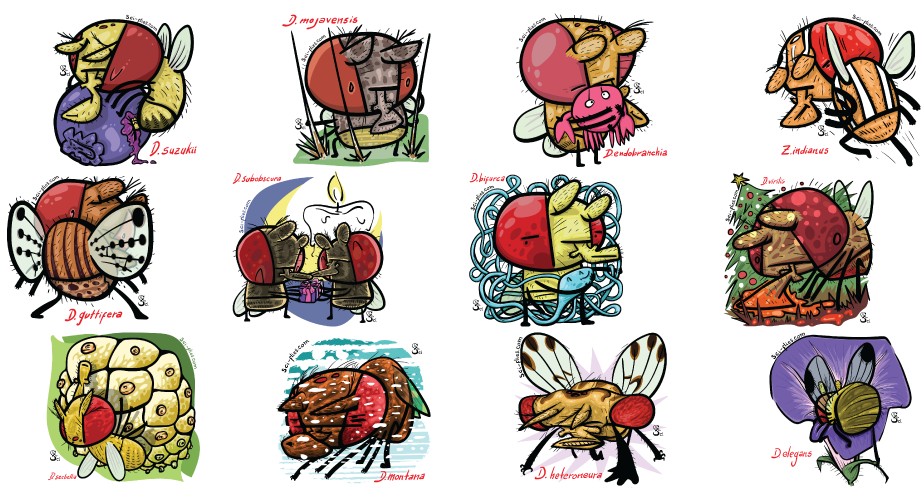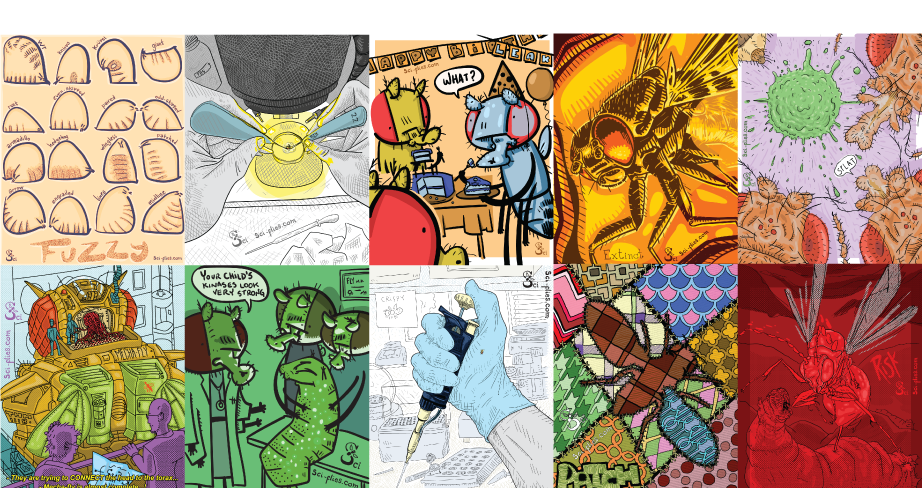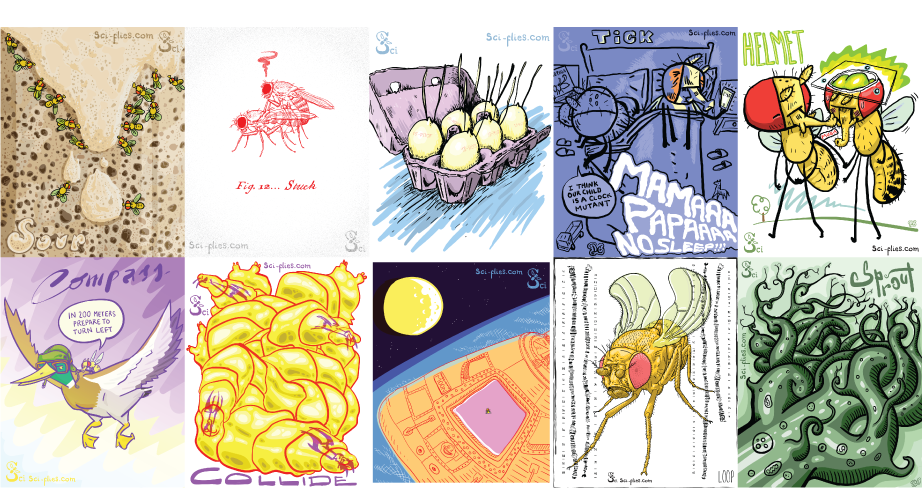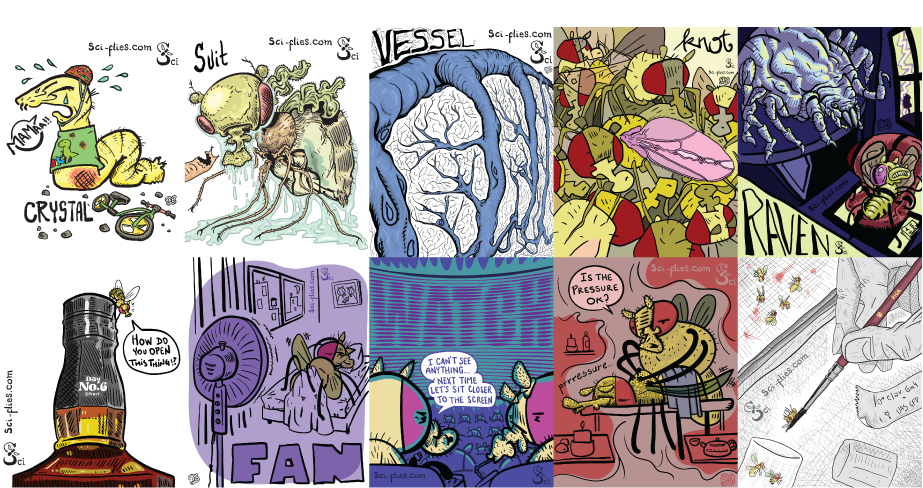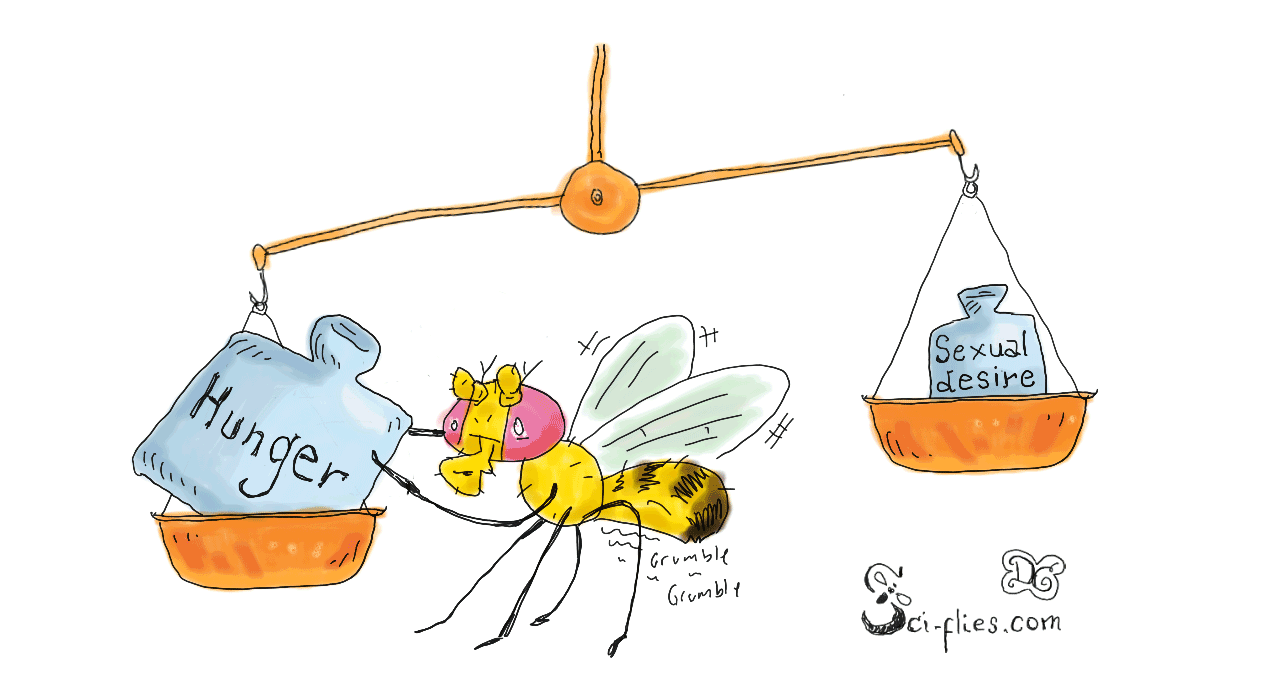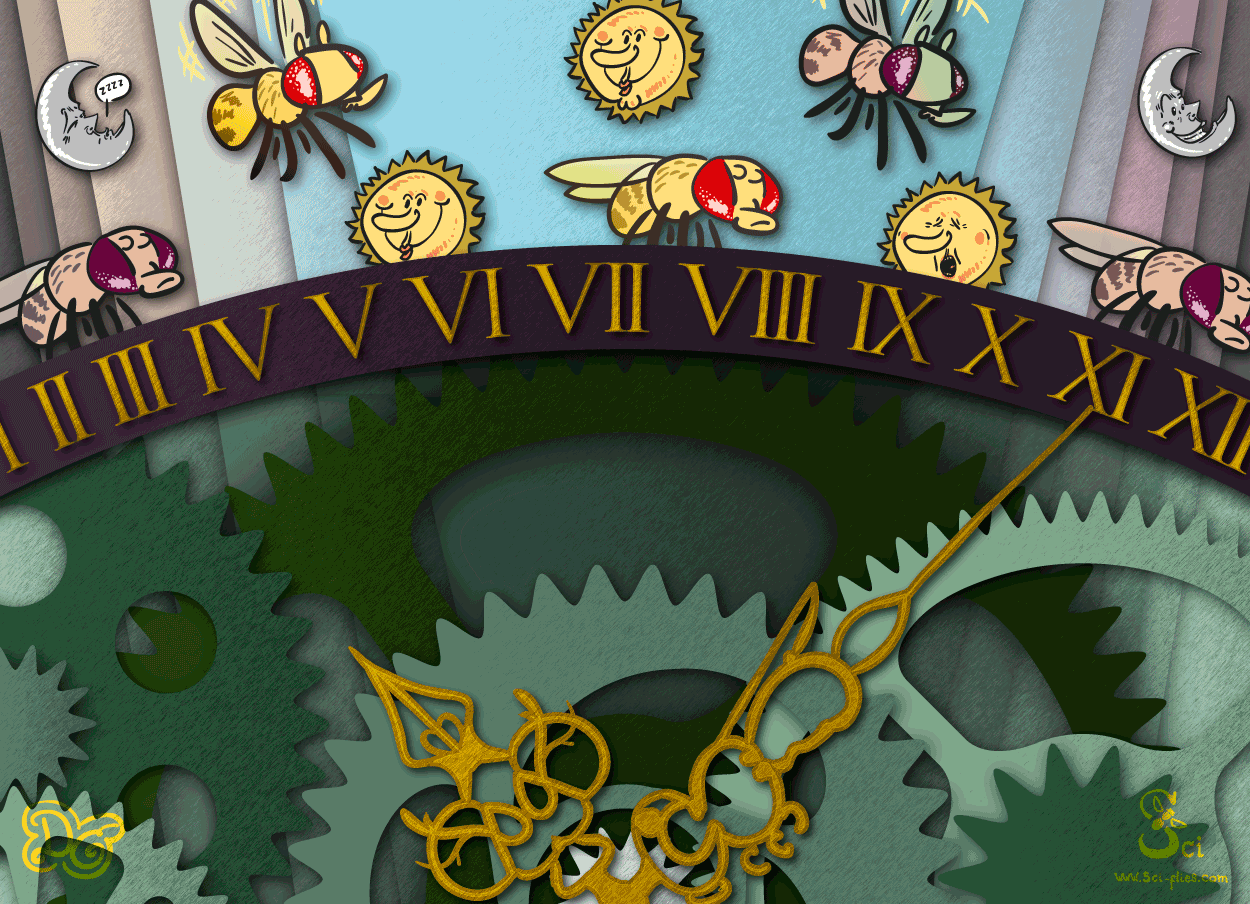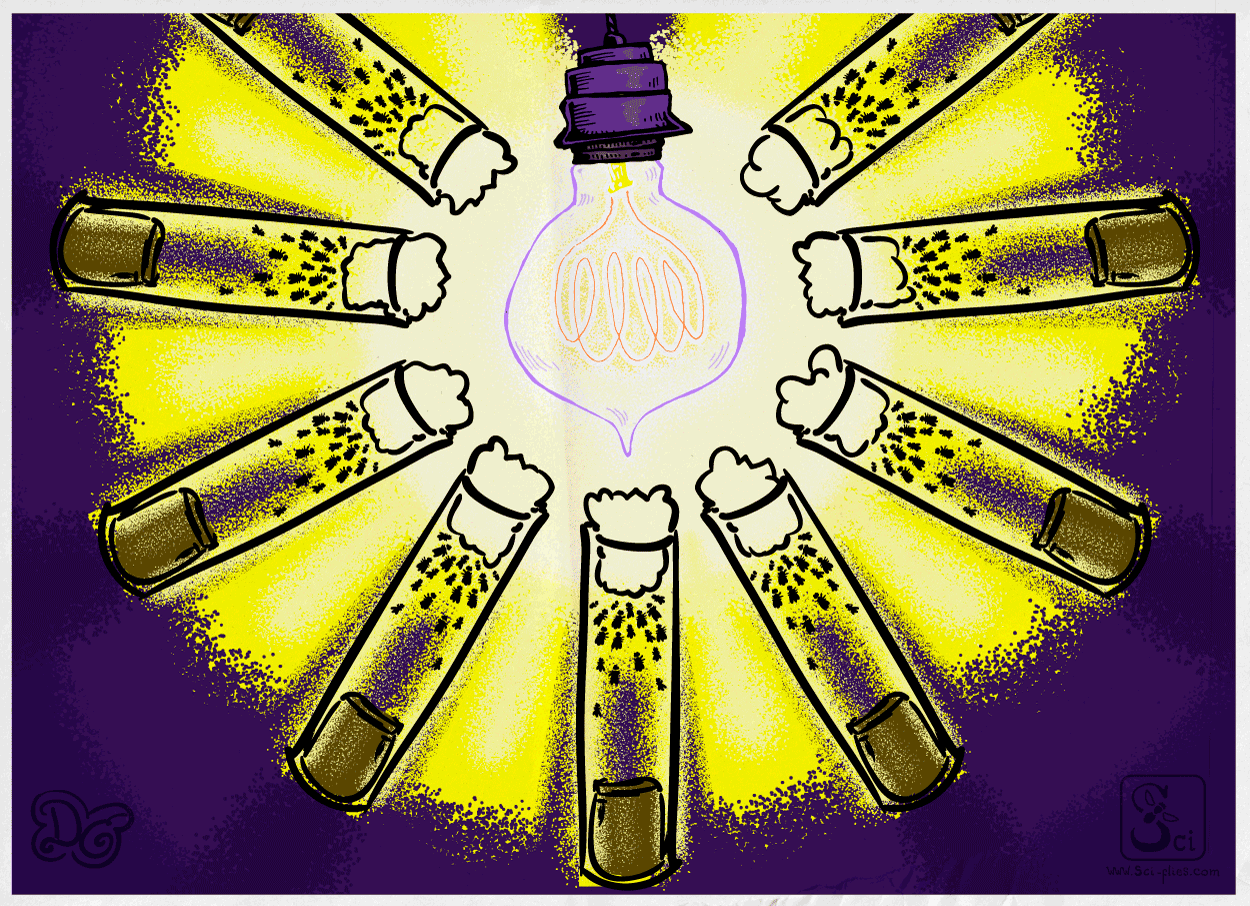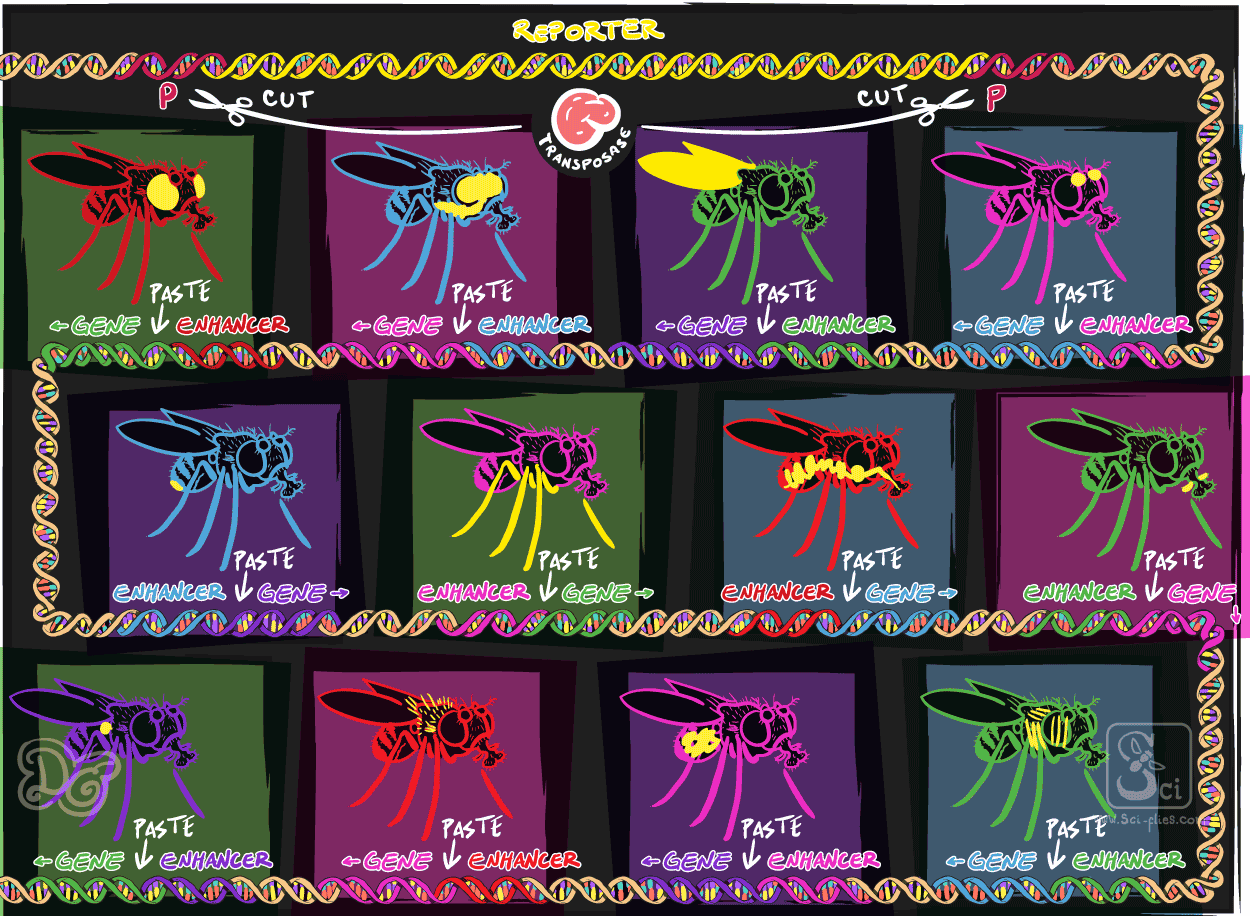No more lonely flies
In 1972 Michel Siffre did a very unusual experiment. He shut himself in a cave for more than six months without human contact. He recorded his vital, sleep patterns, cognitive functions, and wrote down his impressions. He reported to have lost his mind and he was so desperate for company that he tried to befriend a mouse.
Solitary confinement is still practiced in many prisons all over the world as a disciplinary or as a “protective” measure when an inmate is considered highly aggressive and dangerous to others. Experts have raised the attention to the negative cognitive, psychological, and physiological consequences, and today many countries considered prolonged solitary confinement as a form of torture.
Even before the Pandemic, half a million people over the age of 60 in the UK said they usually spend every day alone. This situation has worsened during the lockdown restrictions imposed in many countries due to the Covid Pandemic, with some early reports of lower mental health.
The circumstances leading to each of these cases of social isolation are very different but there is one thing in common. The lack of social interaction has profound deleterious effects on our health. We need social interactions. In fact, a recent study showed that even after a short period of isolation people crave social interactions similar to the way a hungry person craves food.
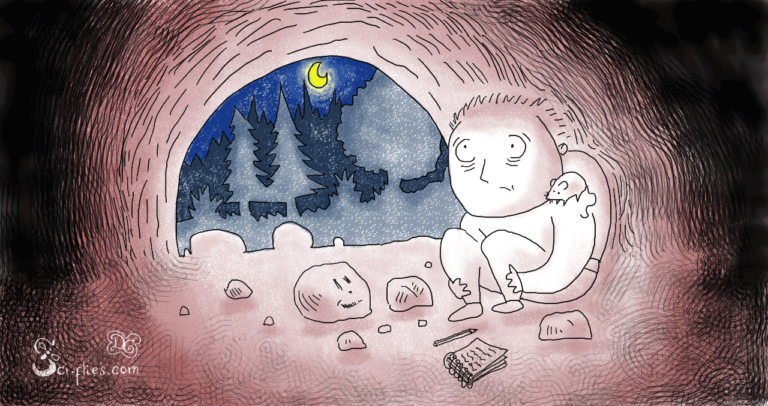
Siffre’s experiments were very important to understand our internal clock and are considered pioneers in the field of human chronobiology. Deprived of any natural or social cues that could tell him what time of the day was, he started to lose his sense of time.
How do we know what ten seconds, ten minutes or one hour are?
What happens to our bodies and to our brains when we are deprived of social contact? This is a very interesting and complex question and you can find some answers in this nice article from The Scientists.
But there is only so much that we can actually study in humans. To really understand what changes in our body leads to the effects of chronic social isolation we need to resort to model organisms.
And guess who can teach us something?
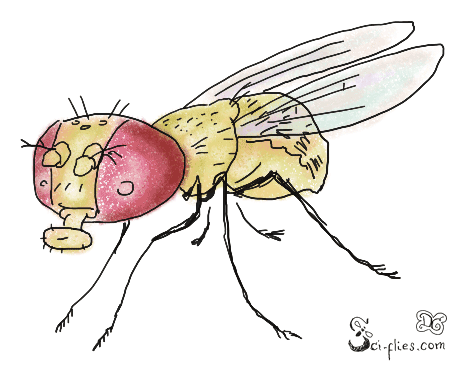
In a recent study from The Rockefeller University Dr. Li and collaborators analyzed the effects of chronic social isolation in flies. The study was done by the group of Dr. Michael W Young, who, together with Michael Rosbach and Jeffrey Hall, won the Nobel Prize in 2017 for the discovery of the molecular components of the circadian clock (one of the six Nobel Prizes that the fly won!)
Before going into the details of the study, I want to make two things clear:
Flies are social insects. They may not compare to other insects like bees, ants, and wasps that have complex social strctures (the so-called eusocial -truly social- insects) but flies do show a high degree of social interaction. In addition to the obvious one-to-one interactions (search of a sexual partner, fights), in nature flies tend to come together in fruits to eat, lay eggs, and seek mates, they form groups while eating, and they can even learn from watching other flies’ behaviors.
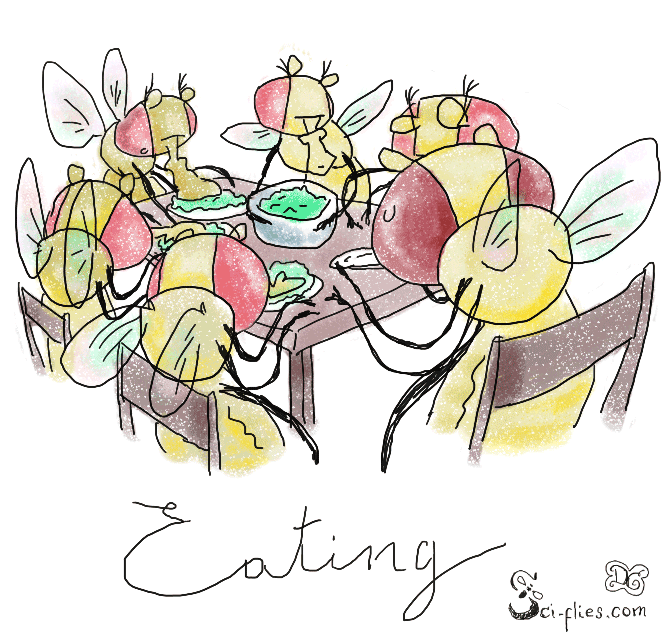
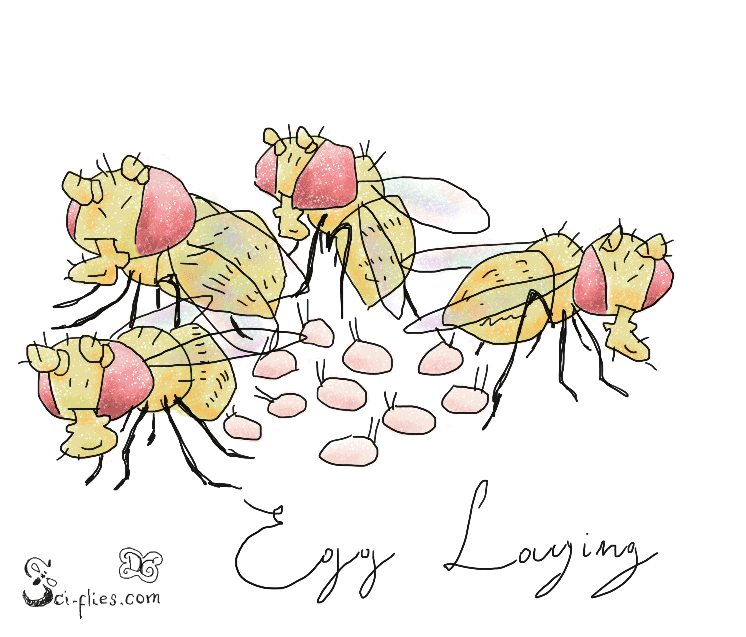
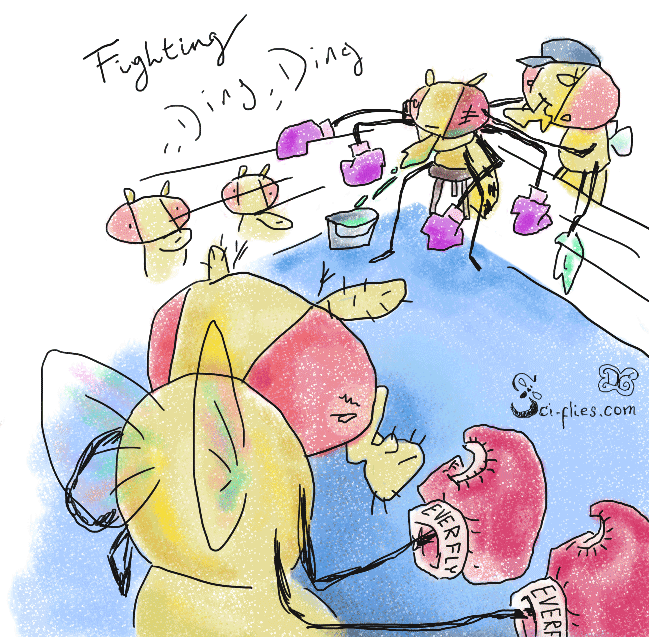
Flies do sleep. If a fly does not move for more than five minutes we consider that it is sleeping. Flies sleep mostly during the middle of the day (“siesta” for nap in Spanish) or at night.
As it happens in humans:
The internal biological clock controls sleep in flies.
The fly compensates for the lack of sleep by sleeping more.
While sleeping, the fly needs a stronger stimulus to respond.
Flies adopt a species-specific posture to sleep
Their sleep is disturbed by hypnotic/stimulant drugs (substances that make you sleepy like Ambien or awaked like coffee.)
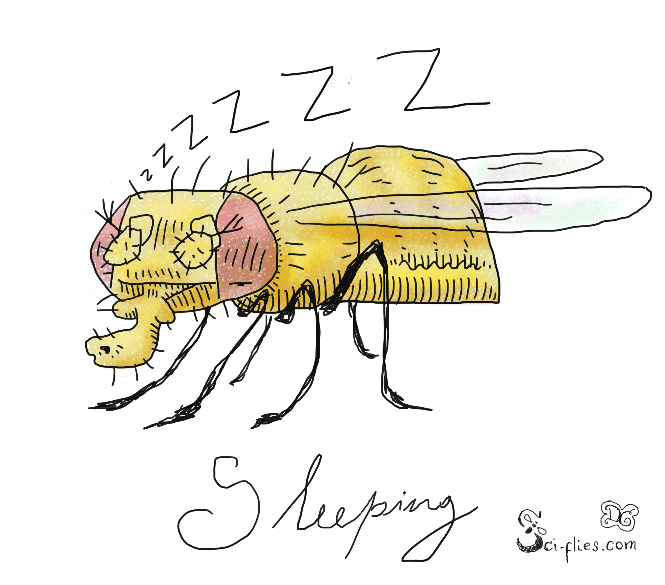
what did the researchers find?
Flies that spent a lot of time without any social contact (seven days isolated) slept less than flies with normal social contact. They observed the same in large and small groups, as well as in young and old flies. This is the “chronic social isolation” group. On the other hand, flies isolated for only a short time (one or three days) slept just as well as flies with normal social contact.
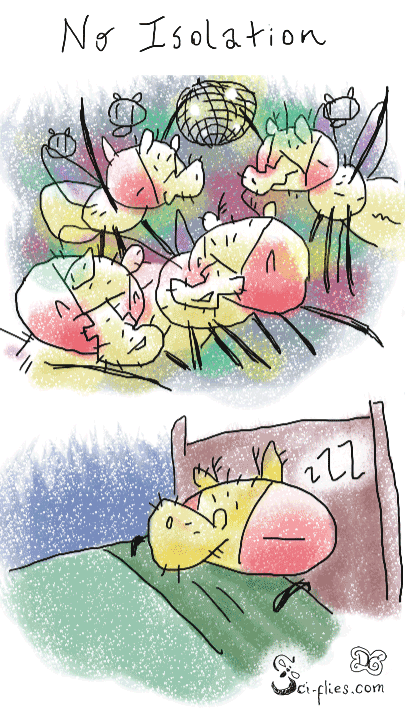
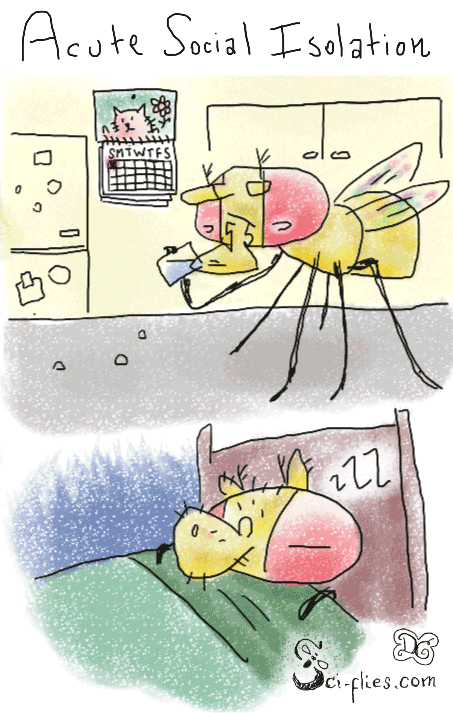
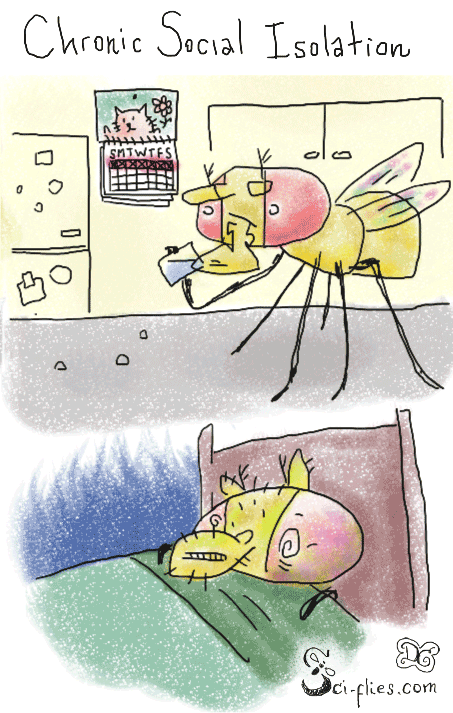
what changes does chronic isolation trigger on the fly?
A good way to approach this question is by performing a general and unbiased analysis, that is, without a predetermined candidate. To do that, the researchers searched for those genes that are expressed differently (more or less) in the brain of chronically isolated flies. In other words, they look at the expression levels of ALL THE GENES in the fly head and see if any is affected.
Genes are discrete portions of DNA that provide the information to, ultimately, produce the proteins that will do the actual work in our cells (but also outside the cells!) Before producing proteins, the gene has to be transcribed into RNA. Each gene can be transcribed one, two, or one hundred times, meaning that, at a given point in time, we can have one, two, or hundreds of copies of an RNA. The more copies of RNA for a given gene X we have, the more protein X we will get later.
Nowadays, we can easily study how much EACH AND ALL THE GENES of an organism are transcribed into RNA and, in doing so, we can have an idea of how much of each protein is available to do the work.
The technique that the authors used is called RNA sequencing or simply RNA-seq. This technique basically “reads” all the RNA molecules in a given sample (a whole body, a tissue or even a single cell) and it can tell you which type of RNA is and how much there is.
This is very useful because it allows you to have an idea of how much of each and all the protein you will have. We could of course directly study the levels of proteins but this is much more complicated, expensive and time-consuming than analyzing the RNA.
In general, RNA-seq is very useful to study how a certain condition (a mutation, a disease, a different environmental or social condition, etc.) changes the gene expression. This means that we always need to compare our results in a certain condition with a “control” condition (no mutation, no disease, normal environmental or social condition, etc.)
We found 50 copies of RNA X. Is that too much or too little? Well, if the control situation is 10, then 50 is definitely too much, but if the control situation is 100, then 50 is too little.
One thing interesting about this and other techniques to study gene expression is that you can choose what part of the body, tissue, or even cell you want to analyze. While the genetic information present in our DNA is practically the same in most of our cells*, which specific genes are actually used differs between cells. We don’t need all the different proteins in all the cells of our body at all times. Actually, the different gene expression is what makes a neuron different from a heart cell!
If in a certain condition the animal behaves differently, then most probably, something changed in its brain and it will need more or less of certain proteins in certain parts of the brain. In this situation, it would make sense to study the RNA levels in the brain but not all the body together.
*Exceptions to this are the germ cells from our reproductive system, the lymphocytes of our immune system and red blood cells.
They found 214 genes that changed their expression level when comparing the situations of flies isolated for a long time (chronic isolation) versus flies isolated for a short time (acute isolation) or flies with normal social contact (not isolated). Among the genes they found, there were several important for metabolism and sleep. Also, many of these genes regulate their expression after a period of starvation.
Two genes in particular caught their attention: Limostatin and Drusolfakinin.
There is more Limostatin in the brains of chronically isolated flies. In general, the amount of Limostatin increases after starvation, and Limostatin suppresses the release of insulin, the hormone that regulates the metabolism of carbohydrates, fat, and proteins.
On the contrary, there is less Drososulfakin in the brains of chronically isolated flies. Drososulfakin is a signal molecule that the animal releases after it has had a good meal, and it induces a state of satiety (the animal does not want to eat more.)
These results of the gene expression analysis are particularly exciting.
The brain of the chronically socially isolated fly resembles the brain of a starving fly.
To better understand the link between social isolation, sleep, and starvation, the researchers recorded the sleeping patterns and feeding habits of flies with normal social contact and chronically isolated flies (isolated for seven days.)
Once again, they found that chronically isolated flies sleep less, but now they were also able to see that flies… eat more! The flies were behaving as if they were starving, but the food was present at all times!
Lack of sleep does not always lead to overeating. Classic sleep mutants (flies where genes important for sleep do not work) eat normal amounts of food. But there is a relationship between eating and sleep in some cases. In general, if an animal is very hungry because there is no food, it will move more to look for food and will sleep less.
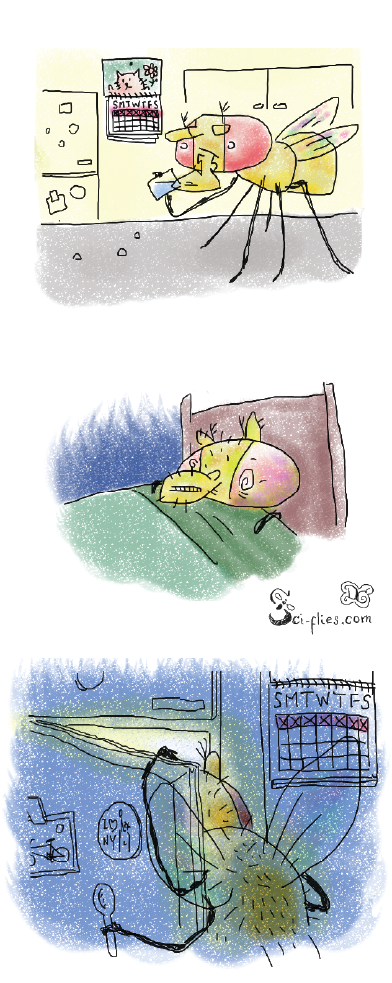

After chronic social isolation, flies behave like hungry flies, reducing sleep and increasing food intake.
This is consistent with reports in humans that show that in solitary situations people eat more.
Fun fact, slightly more than 6 in 10 U.S. adults reported undesired weight change since the start of the pandemic.
Observing similar things in flies and in humans is great. It makes it possible to model in the fly the effects of social isolation, and that opens up the possibility of studying the molecular and neuronal mechanisms (something that as I mentioned at the beginning of the post, we cannot do in humans).
And that is exactly what the researchers did.
To understand the molecular mechanisms, let us go back to the results of the gene expression experiment. One of the interesting genes was Limostatin, which is expressed more in flies with chronic social isolation.
The authors found that the protein Limostatin is produced in neurons important for metabolism and stress responses and that could communicate with neurons that promote sleep and regulate sleep homeostasis. They called these neurons P2-neurons.
Using our beloved UAS-Gal4 system the researchers could turn on and off the P2 neurons in socially isolated flies and studied what happens with sleep and feeding in those conditions.
If a fly has been kept alone for a long period (seven days), but we artificially turn the P2 neurons off, then the fly sleeps normally and they don’t overeat that much. Conversely, if a fly is only isolated for a short time (one day), and we artificially turn on the P2 neurons, then the fly sleeps less and overeats.
Turning on P2 neurons can make a fly behave as if it has been isolated for a long period when, in reality, it was only isolated for a short time.
Interestingly, turning on P2 neurons in flies that are not isolated does not alter sleep or feeding.
P2 neurons could act as a timer for social isolation.
What does that mean exactly?
One possibility is that P2 neurons sense (directly or indirectly) social isolation and via a still unclear mechanism, they could keep track of how much time the fly has been alone. If it is not too much, there is no change. If it is too much, the fly will sleep less and eat more.
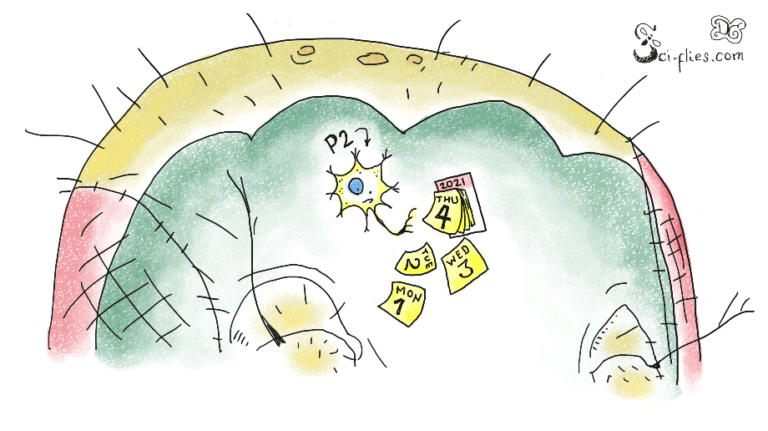
Definitely, the effects of chronic social isolation in humans are much more complex. It affects many aspects of human physiology, behavior, and psychology. One of the most commonly reported effects of chronic social isolation is depression and dementia, and these are conditions very difficult to study in other animals.
For mice we always talk of “depression-like behaviors”, because we cannot ask a mouse if it is feeling depressed, but we do see that they have fewer social interactions or they are mostly inactive. Dementia is even more complex. Researchers can, to a certain extent, model in rodents Alzheimer disease dementia or vascular dementia -the two more common forms of dementia in humans. They are considered good models because they recapitulate the pathological alterations at the cellular and tissue levels and some of the behavioral responses, but we cannot study the most obvious psychological signs of dementia.
However, as we mentioned before, chronic isolation in humans also leads to sleep problems, and luckily sleep problems are something that we can study in animal models!
Interestingly, sleep problems correlate with the onset of dementia and depression, and insomnia increases the risk of some types of dementia. Some researchers even wonder what comes first.
Could it be that chronic sleep problems, along with other factors, are at the origin of some forms of dementia?
Could that be the case for the behavioral effects of chronic isolation?
To finish, I wanted to leave you with a reflection. Social isolation in humans promotes new emotional states that intensify with time. A universal definition of emotion is complex but most researchers agree that emotions include certain expressive behaviors that are associated with internal brain states that we, humans, subjectively experience as “feelings”.
A fair question is then, do simpler animals like flies and worms have emotional states or not?
“Even insects express anger, terror, jealousy, and love, by their stridulation.”–Charles Darwin (1872).
To our eyes, his view seems highly anthropocentric and, most probably, emotional states in simpler animals are not necessarily homologous to our specific psychological categories (anger, terror, jealousy, love, etc.) Probably a fly does not feel anger or jealousy. Most likely, simpler animals have primitive emotional states with some fundamental properties, and these are the basis for the evolution of more complex emotions.
So the question rises again: Can we study emotions in flies?
In principle, emotions can be studied in animals if there is a robust behavior for an emotion or a condition associated with an emotion. In more detail, these behaviors should have some or all of these characteristics: behaviors that are persistent, generalized, with a defined valence (hedonic value), and that are scalable.
What does persistent, generalized, with a defined valence, and scalable means in the context of emotional behaviors?
Persistence: Emotional behaviors tend to persist even after the stimulus that triggers them is over. If we are almost hit by a car, our heart beats faster, we sweat, our blood pressure rises, and all these signs of fear will continue for several minutes after the car is long gone and we are safe.
Generalization: Emotional behaviors can be generalized, meaning that they impose a bias and can affect future behaviors completely unrelated to the stimulus that triggered the emotional behavior in the first place. Going back to the example of the car, the “bad experience” of almost being hit by a car would make us more cautious when crossing the street or facing other potential dangers in the future.
Valence: Valence is the hedonic value of something, or in simpler words the intrinsic attractiveness or aversiveness of something. The “Principle of Antithesis” says that emotions come normally in pairs of opposite valence and that they are expressed by physically opposite and complementary behaviors. Some examples would be joy vs. anger or happiness vs sadness.
Scalable: This property refers to the intensity of the emotional behavior. If we consider again our example of the car accident, the human emotional response could be, from low to high intensity, afraid, scared, frightened, or terrified.
Interestingly, a study in flies described an emotional state that complies with all these criteria. The experience of winning or losing in repetitive fights creates an internal state that has long-term behavioral consequences to the fly. The “winner” state is perceived as positive or rewarding. The winner flies tend to win further encounters, but also act as “winners” for other behaviors, courting more and taking riskier decisions. The opposite happens to the “loser” flies, that is, those that have lost several fights.
In the paper that we discussed today, Dr. Li and collaborators found that in flies, sleep loss is a robust behavioral characteristic of the duration of social isolation.
- Does chronic social isolation trigger an emotional state in flies then? where the behavioral choice is less obvious?
- Are sleep loss and increased feeding emotional behaviors?
Maybe. I’m still not 100% convinced, but it could be. For sure, it is an exciting and provocative possibility.
See you soon, fly lovers.
Note:
– This discovery was published in August 2021 in the Journal Nature. You can find the original paper here: Li et al, 2021 Nature.
– The Young lab studies the function of the internal biological clock, known as the circadian clock. You can find out more about their projects on the official website from the lab and this interview.
– For this post I consulted several reviews and scientific papers:
- Levine, 2021, Nature.
- Lobel, Smith, 2020, Oxford University Press.
- Tomova et al., 2020, Nat Neurosc.
- Dukas, 2020, Sci Rep.
- Beckwith, French, 2019, Front Physiol.
- Kim et al., 2018 PNAS.
- Shi, et al., 2018 Sleep Med Rev.
- Anderson & Adolphs, 2014, Cell.
- Choi, et al., 2011, BNR.
– This article is Sci-flies’ interpretation of the published research paper. Sci-flies.com is not affiliated to the authors, institutions, or publishers of this research. We do it because we like it!
